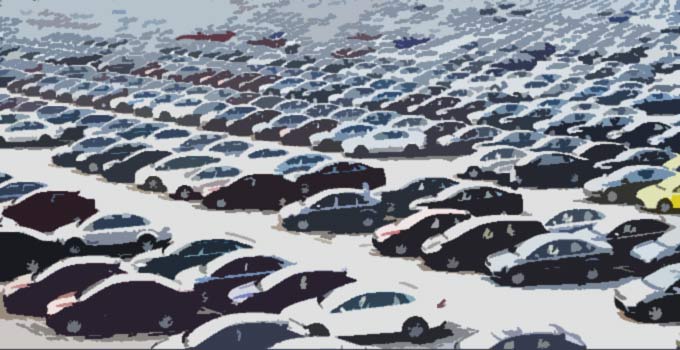Best Vehicle Choices For Preparedness

I recently received the following email from a MSB reader:
Ken,
Have you and/or your readers reviewed/commented on vehicle choices for preparedness/emergency?
I am looking to replace a 2005 Accord sedan and the current thoughts are:
– Honda CR-V
– Toyota RAV-4
– Subaru Forester(Subaru Outback also under consideration)
None of these are full up SUV or pickups, however they seem reasonable for my suburban lifestyle.
Current nod is to the Forester due to driver visibility.
I would be interested in what you and your blog followers think about these choices, or other choices. Thanks.
What an excellent topic!
If you were to fantasize about the best motor vehicle for preparedness,
what would it look like?
Ask yourself, “Just what is the role of my preparedness vehicle post-event?”
“What’s its purpose?”
I see the primary role to be either one of two uses:
1. Getting us and our supplies to a bug-out location.
2. To get us home from wherever we may be when the event takes place.
Note: Lets keep it generally practical while not necessarily building a long term bugout or ‘MadMax’ vehicle.
Note: Lets try and avoid (for this discussion) ‘EMP proof’ vehicles.
Parameters For Best Vehicle
I suppose we could go all-out and list prerequisites that would get us through ‘anything’. However that’s probably not too realistic.
More likely would be overcoming some obstacles along the way. Back road travel, maybe off road (if you know where you’re going). Winter conditions, maybe flooding, poor traction. Lets hear more of your own suggestions in the comments…
Lets consider some features that would be nice to have for a preparedness vehicle:
– Storage space that’s adequate for gear & supplies
– 4 Wheel drive, or ‘All wheel drive’
– Ground clearance that’s more than a ‘typical’ vehicle
– Large capacity gas tank, (max range on a tank of fuel)
– Tow package (maybe applicable for bugout)
– ?
Add-ons
– 2nd Gas tank
– Aggressive tread tires
– Radios (communications, scanner)
– DC to AC inverter
– ?
A few vehicles that I’ve owned:
Jeep Grand Cherokee (1994)
I really loved that Jeep. I ran it more than a quarter million miles and it saw lots of the country and lots of off road. I will always have a place in my heart for that Jeep (more the memories than anything else I suppose). The newer one’s not so much (by their appearance) – they’re smaller.
Navigator
Built on a F150 frame, this SUV was huge. It fit lots of ‘stuff’. Only had it for several years. Sold it and then bought the next vehicle:
F350 Super Duty
I really like this truck (I tow with it). Full size bed with BAKflip security cover, full crew cab (plenty of room), diesel engine, nearly 700 mile range (not towing), 4×4. If I had to point out a potential flaw in a full size truck — it’s overall size, length (22′). It could be difficult if off road in ‘tight’ conditions. However I don’t plan to have to do that…
Alright, lets hear your thoughts on this subject.
Do you also have specific vehicle recommendations (keeping in mind the initial question from the person who emailed)?
(UPDATE)
The Subaru Forester seems to be favored for small SUV class
Related article (gets into more SHTF type transportation),
Best SHTF Vehicles
